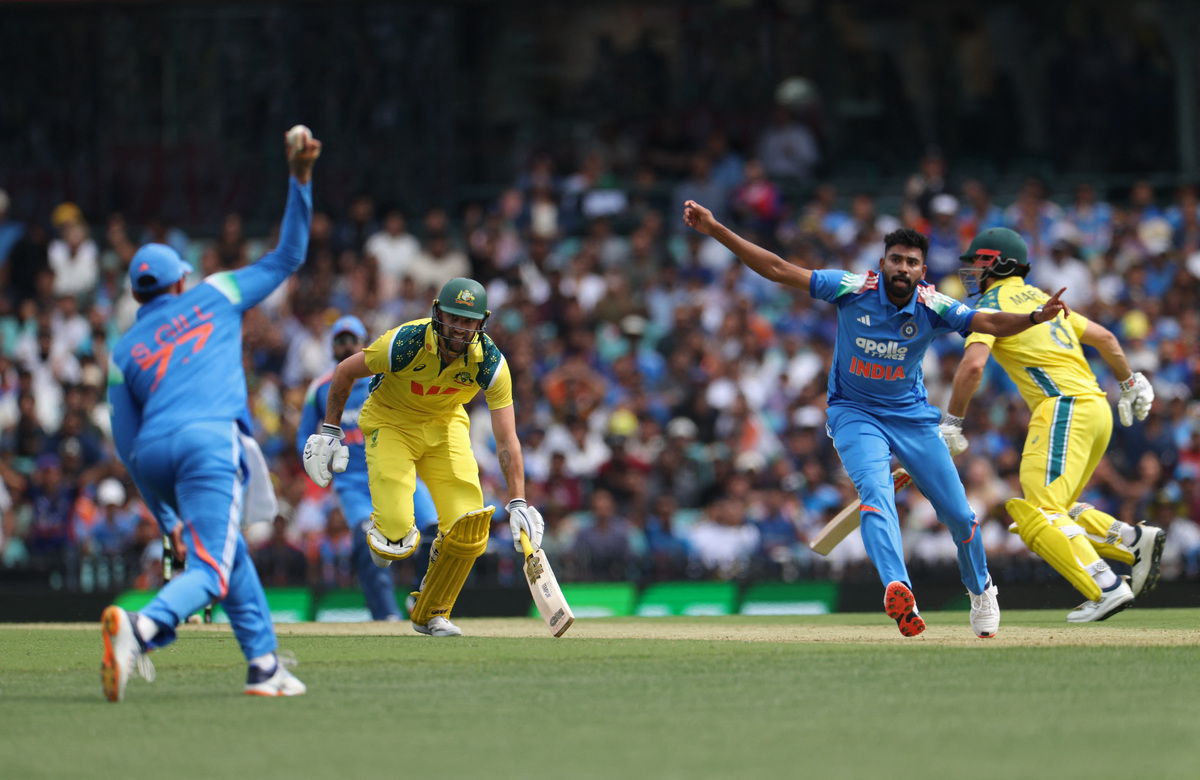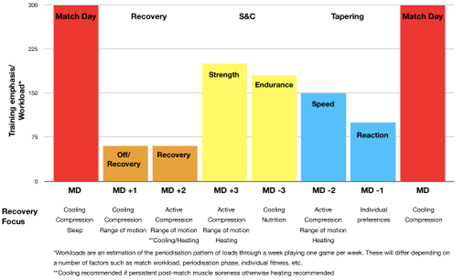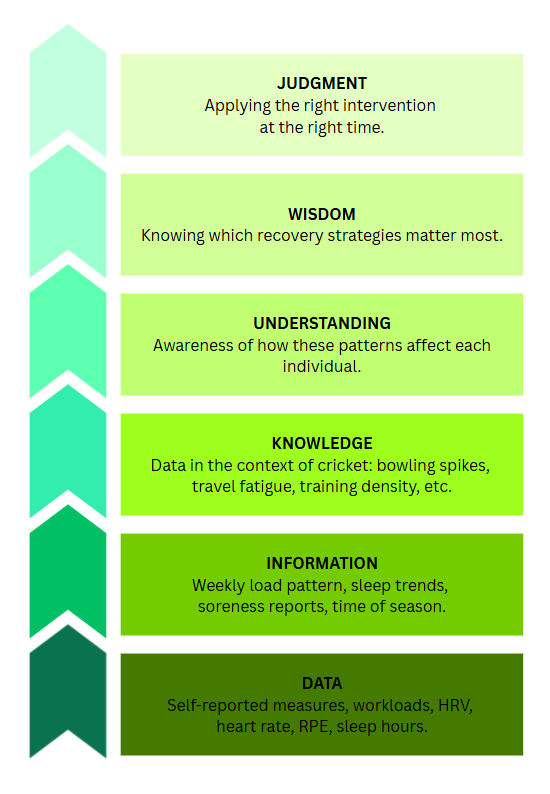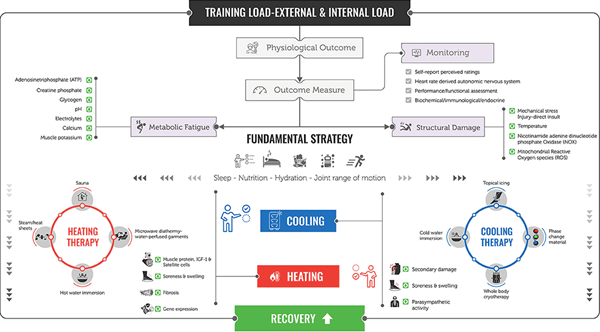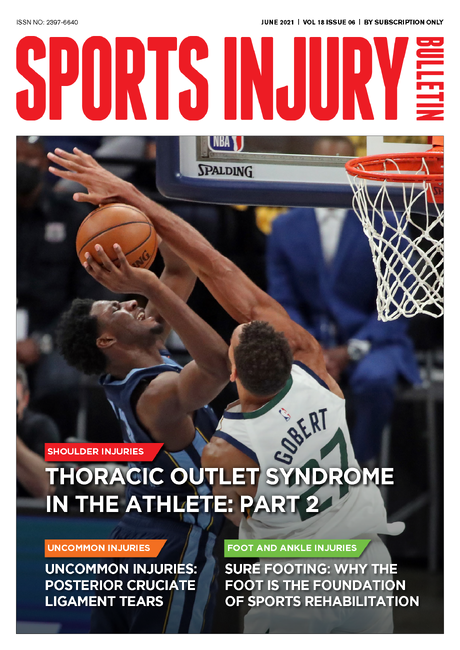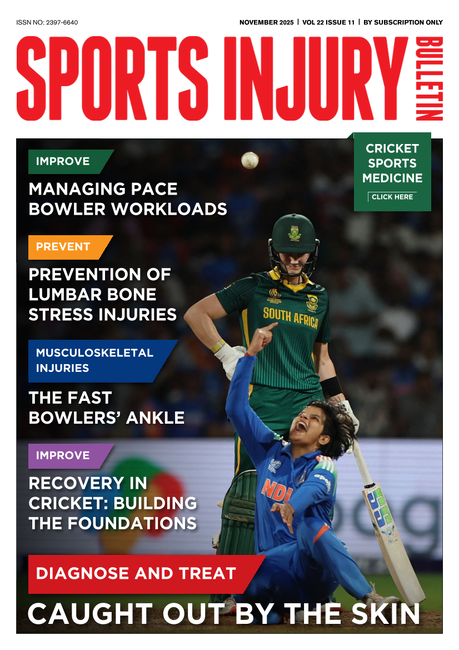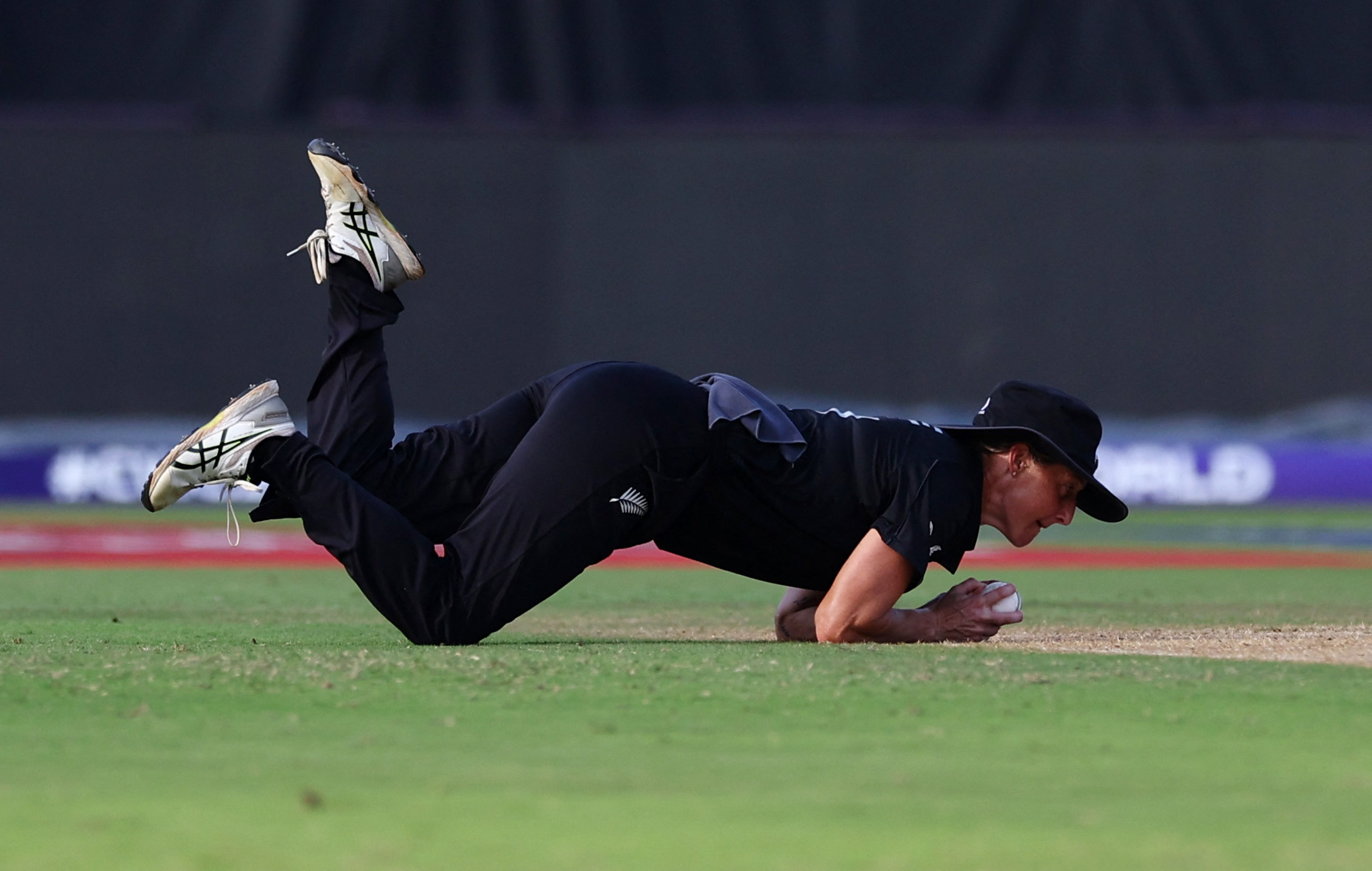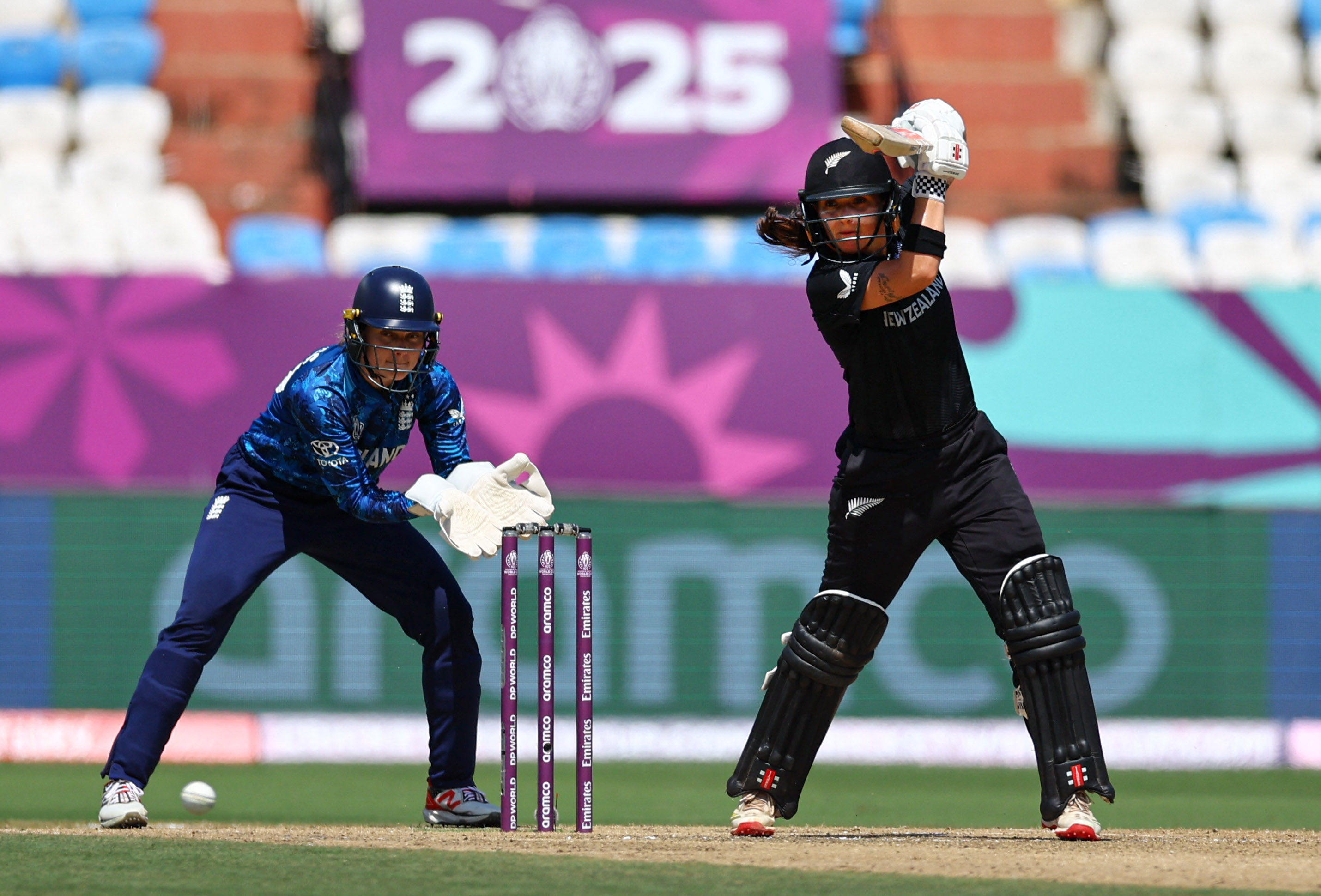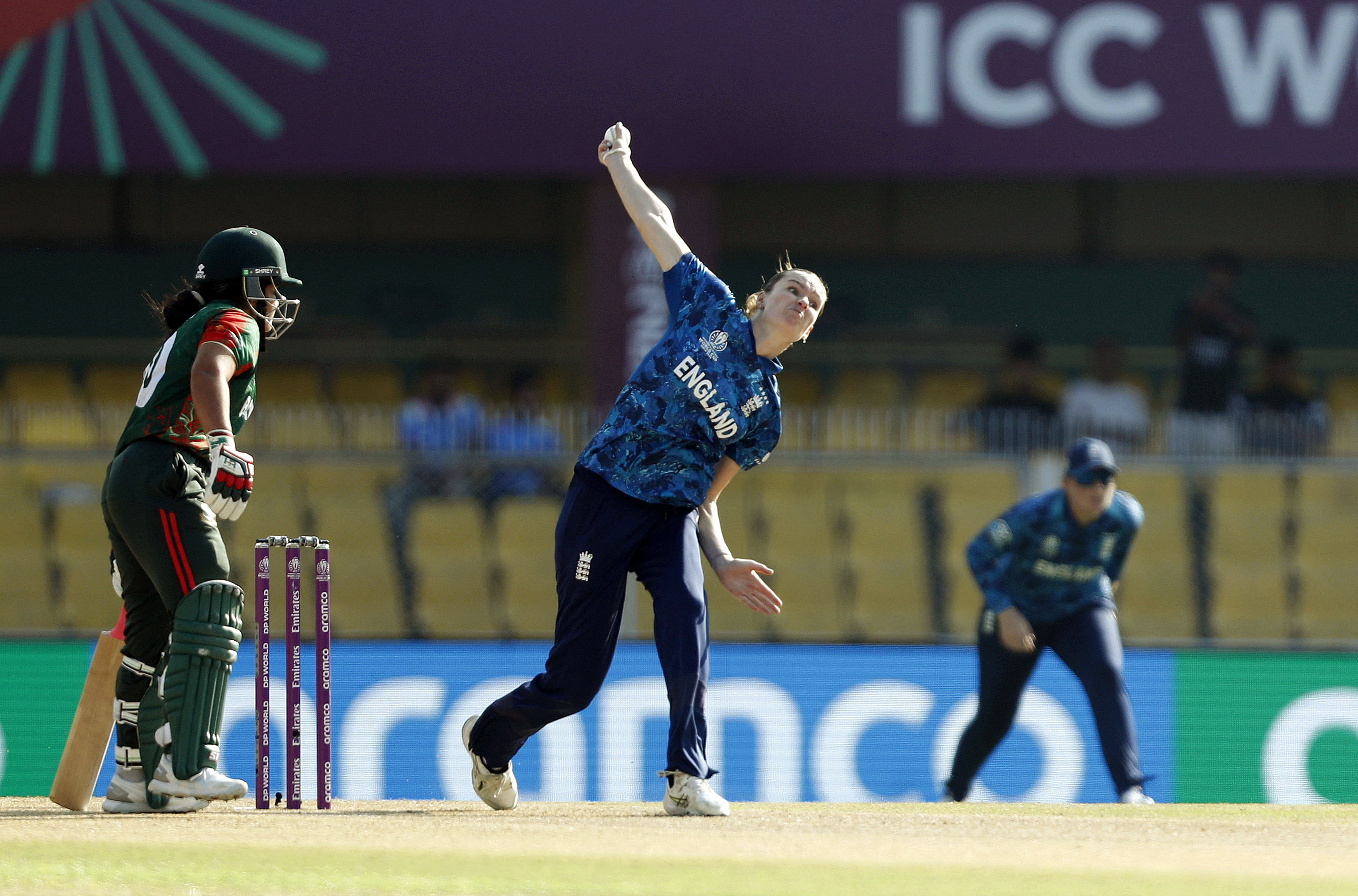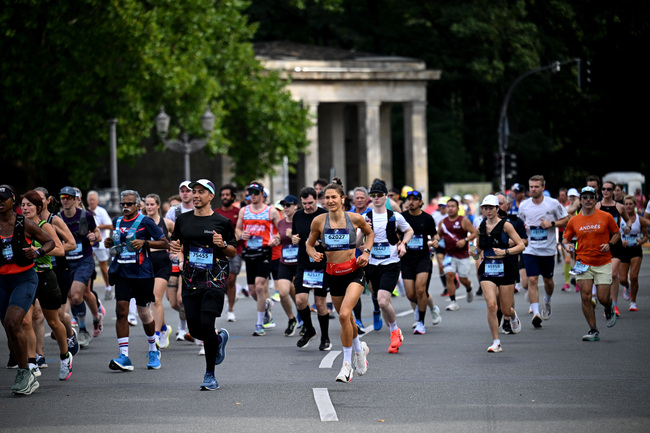You are viewing 1 of your 1 free articles
Recovery in Cricket: Building the Foundations
George Dunlop explores the principles of recovery in cricket, focusing on the interplay between load management, biomechanics, and tissue capacity, while offering practical strategies for players and coaches.
Cricket - One Day International - Australia v India - Sydney Cricket Ground, Sydney, Australia - Australia’s Matthew Short in action REUTERS/Hollie Adam
In the evolving physiological and psychological demands of team sports, recovery is no longer a luxury; it is a necessity(1,2). In cricket, where matches can stretch across hours or even days, and where players perform repeated explosive actions such as sprinting, bowling, or batting under physical and mental pressure, recovery becomes the cornerstone of sustained performance(3).
The Demands of Cricket
Cricket is unique in its demands. It requires athletes to spend prolonged time on their feet, engage in repeated high-intensity efforts, and maintain sharp mental focus. Most cricket injuries are overuse injuries that develop when workloads exceed the body’s capacity(4). There is therefore a strong relationship between cricket injuries and high workloads(4). Insufficient recovery is one of the most significant training-related factors contributing to negative outcomes such as athlete burnout, overtraining syndrome, and an increased risk of illness or injury(3).
Understanding Recovery
Recovery is a multifaceted term that includes both psychological and physiological processes(3). Its purpose is to restore balance between bouts of exercise or stress and enable adaptation. When athletes manage recovery effectively, it transforms higher workloads from potential risk into a stimulus for resilience and performance growth.
The autonomic nervous system (ANS) is central to recovery, balancing the sympathetic system (“fight or flight”) with the parasympathetic system (“rest and digest”)(5). After training, shifting into parasympathetic mode lowers heart rate, reduces blood pressure, and promotes digestion and relaxation, all key for effective recovery(5). Deep breathing, meditation, or cold-water immersion stimulates the vagus nerve, which drives the parasympathetic system. This helps athletes restore balance and optimize performance. At the musculoskeletal level, exercise creates tiny tears in muscle fibers, which trigger inflammation, deplete energy stores, and cause fluid loss(6). An optimal recovery supports the process that repairs these fibers, eases soreness, and restores glycogen, ultimately building stronger and more resilient muscles(6).
“Recovery is a multifaceted term that includes both psychological and physiological processes.”
Taken from Olivier, B., Orchard, J.W. (eds) Cricket Sports Medicine. Springer, Singapore. doi.org/10.1007/978-981-96-6321-7_15
Recovery Types and Time Scales
Cricket places diverse physical and mental demands on players, meaning they must tailor their recovery rather than a ‘one-size-fits-all’(7). Recovery is multifaceted and poorly defined; however, for this article, we have simplified the types of recovery. Specifically, these include passive, active, and proactive approaches, which athletes can apply across varying time scales depending on their needs.
Recovery Across Time Scales
- Short-term (minutes to hours): These are the moments between deliveries or overs. Strategies include controlled breathing, re-centering focus, and simple routines that help players manage arousal levels, maintain clarity, and stay present in the contest. Furthermore, athletes can use mid-cooling (cooling during exercise) to cool their bodies during heat stress, along with hydration and nutritional strategies to replenish lost fluids and energy(8,9).
- Medium-term (hours to days): Occurring between training sessions or match days, this phase involves nutrition, hydration, cooling, heating, active recovery, physiotherapy, and adequate sleep. The goal is to replenish glycogen stores, reduce neuromuscular fatigue, and restore readiness for the next load.
- Long-term (days to weeks): This scale spans training blocks, competitions, or off-season periods (micro- and macro-periodization) (see figures 1 and 2). Athletes sustain resilience and prevent accumulative fatigue through planned deloads, periodized training, consistent wellness habits, and psychological recovery practices.
Recovery Modalities
- Passive recovery uses rest or external aids to promote recovery. Quality sleep remains the most effective method, restoring both physical and mental function(10,11). Massage, compression garments, and hydrotherapy can enhance circulation, reduce soreness, and support tissue repair(12). Mindfulness, breathing, and relaxation techniques support psychological recovery by improving focus, sleep quality, and emotional balance(9).
- Active recovery includes light movement such as jogging, swimming, or yoga, which encourages joint range of motion, enhances blood flow, promotes tissue repair, and reduces stiffness(13). Mobility and joint-focused exercises maintain movement quality and help prevent overuse injuries common in cricket.
- Proactive recovery focuses on self-driven and social behaviors that maintain balance and resilience, i.e., connecting with teammates, spending time in nature, or adopting consistent wellness routines that support both performance and mental well-being(14).
Taken from Olivier, B., Orchard, J.W. (eds) Cricket Sports Medicine. Springer, Singapore. doi.org/10.1007/978-981-96-6321-7_15
Pillars of Injury Prevention and Recovery
In cricket, effective recovery and injury prevention rely on balancing biomechanics, capacity, and load management, three interconnected pillars that shape performance, health, and resilience.
A biomechanical understanding of movement highlights which tissues and patterns are most exposed to stress. In cricket, one size does not fit all, as individual differences in anatomy, coordination, and technique shape how players move. However, certain movement patterns increase risk(15). Evaluating efficiency and control within each player’s unique technique helps target mobility, stability, or technical interventions that reduce load on vulnerable structures and enhance recovery.
A player’s capacity reflects their preparedness to handle the physical and physiological demands of the game. Strength, endurance, and mobility form the foundation for tolerating the high and varied loads of training and competition, while regular monitoring helps ensure adaptation without accumulating fatigue or dysfunction(16).
Practical Recovery Takeaways
1. Recovery fundamentals include sleep, nutrition, hydration, and joint range of movement.
2. Simple subjective athlete wellness check-ins: fatigue, mood/stress, muscle soreness, sleep quality, and readiness to train.
3. Monitoring athlete behavior post-training and use of RPE (rating of perceived exertion) after training/atches.
4. Integrate technology when useful, but don’t overlook subjective data and understand limitations of data, i.e., wrist heart rate data reliability is debatable(19).
5. Build positive recovery habits. For example, bowlers use breathing techniques between overs, batters reset focus between deliveries, and maintain hydration.
6. Educate players to use recovery as a part of their training and post-game routine.
7. Follow the 10% rule for gradual increases in load management. Spikes in training are inevitable; planning and foresight can allow for early intervention.
8. Plan recovery days, with active movement as well as incorporating deload weeks.
9. Every player responds differently. Some need more sleep focus, others nutrition guidance, or psychological decompression.
10. Use regular feedback to fine-tune recovery plans (see figure 3).
Load management maintains balance between work and recovery in line with a player’s current capacity. Matching training and competition demands to readiness allows load to serve as a positive adaptive stimulus. When this balance is lost, through either overload or underload, the risk of injury and illness rises (see figures 1 and 2)(16).
Together, these pillars form a holistic framework for performance and longevity. Aligning movement efficiency, physical capacity, and load balance helps cricketers recover effectively, stay robust, and perform consistently across the demands of the modern game.
Measuring Recovery
Effective recovery in cricket requires monitoring protocols that include measures of both workloads and recovery(7). Clinicians must manage neuromuscular fatigue (NMF) to support training adaptations, maintain competition readiness, and minimize the risk of injury or illness(17). Resources such as team budgets and skilled staff influence which tools are most practical.
Self-reported Perceived Ratings
Self-reported ratings of sleep, soreness, stress, fatigue, and readiness are cost-effective tools for daily monitoring(18). Their success depends on player compliance, a strong team culture, and education on interpreting scores and feedback(7).
Objective Recovery Measures
Technology provides deeper insight into recovery, but data must be reliable and translate into meaningful action(19,20). Common metrics include heart rate variability (HRV), resting heart rate, sleep patterns, force platform analysis, and velocity-based training (VBT).
- Heart rate variability reflects autonomic nervous system balance and is a reliable marker of training status, adaptability, and recovery. A return to baseline within ~48 hours suggests recovery of key processes such as temperature regulation, metabolism, and fluid balance(21,22).
- Velocity-based training uses barbell movement velocity as a real-time indicator of training intensity and fatigue. Because bar speed is closely linked to relative load (%1RM), velocity can guide load prescription without the need for maximal testing. Importantly, the extent of velocity loss during a set is strongly associated with mechanical, metabolic, and perceptual fatigue(23). This auto-regulatory approach helps athletes sustain high-quality repetitions, manage neuromuscular fatigue, and promote optimal adaptations, making it a practical tool for performance and recovery monitoring.
“The importance of recovery strategies in professional cricket teams is increasingly clear.”
Conclusion
The importance of recovery strategies in professional cricket teams is increasingly clear. At the elite level, success often depends on a delicate balance between hard training and intelligent recovery. The true value of recovery lies in mastering the basics, monitoring key indicators, and establishing healthy habits (see figure 4). By moving systematically from data to judgment, teams can make informed recovery decisions that not only reduce injuries but also enhance performance and extend careers. Recovery is not an afterthought; it’s part of the team environment and player education.
Tip: Cooling vs. Heating Strategy
Immediately following intense physical loading, start with cooling (e.g., cold-water immersion, local phase change material) to limit secondary muscle damage by reducing the inflammatory response. Once the initial phase settles, shift to heating (like sauna, hot baths, or heat garments) to boost blood flow, clear metabolic waste, and support tissue repair(24).
References
1. Sports medicine, 36(9), 781-796.
2. British journal of sports medicine, 53(19), 1231-1235.
3. Int J Sports Physiol Perform. 2018;13:240-5.
4. Open Access J Sports Med. 2016 Dec 13;7:187-194.
5. Neuroanatomy, sympathetic ner¬vous system. StatPearls; 2024.
6. Eur J Sport Sci. 2019;19:71-85.
7. Recovery in Cricket: Practical Approaches for Optimising Performance and Preventing Injury. In: Olivier, B., Orchard, J.W. (eds) Cricket Sports Medicine. Springer, Singapore.
8. Sports Medicine. 47. 10.1007/s40279-016-0625-7.
9. Sports (Basel). 2023 May 10;11(5):103.
10. Int J Sports Physiol Perform. 2015;10:950-7.
11. Clinical J of Sport Med: Official Journal of the Canadian Academy of Sport Medicine. 2020;30:503-12.
12. Clinical J of Sport Med: Official Journal of the Canadian Academy of Sport Medicine. 2008;18:446-60.
13. J Strength Cond Res. 2019;33:2275-87.
14. Sports Med Open. 2024 May 16;10(1):55.
15. Med Sci Sports Exerc. 2021 Mar 1;53(3):581-589.
16. Br J Sports Med. 2019 Jan;53(1):5-6.
17. Sports (Basel). 2022;10:33.
18. J Athl Train. 2020;55:944-53.
19. Quality in Sport. 32. 55350. 10.12775/QS.2024.32.55350.
20. IEEE Pulse. 2017;8:38-43.
21. Experimental and therapeutic medicine. 2016;11:1531-6.
22. Int J Environ Res Public Health. 2021;18.
23. Int J Sports Physiol Perform 2017; 12: 27–34.
24. Frontiers in Sports and Active Living. 3. 10.3389/fspor.2021.707503.
Newsletter Sign Up
Subscriber Testimonials
Dr. Alexandra Fandetti-Robin, Back & Body Chiropractic
Elspeth Cowell MSCh DpodM SRCh HCPC reg
William Hunter, Nuffield Health
Newsletter Sign Up
Coaches Testimonials
Dr. Alexandra Fandetti-Robin, Back & Body Chiropractic
Elspeth Cowell MSCh DpodM SRCh HCPC reg
William Hunter, Nuffield Health
Be at the leading edge of sports injury management
Our international team of qualified experts (see above) spend hours poring over scores of technical journals and medical papers that even the most interested professionals don't have time to read.
For 17 years, we've helped hard-working physiotherapists and sports professionals like you, overwhelmed by the vast amount of new research, bring science to their treatment. Sports Injury Bulletin is the ideal resource for practitioners too busy to cull through all the monthly journals to find meaningful and applicable studies.
*includes 3 coaching manuals
Get Inspired
All the latest techniques and approaches
Sports Injury Bulletin brings together a worldwide panel of experts – including physiotherapists, doctors, researchers and sports scientists. Together we deliver everything you need to help your clients avoid – or recover as quickly as possible from – injuries.
We strip away the scientific jargon and deliver you easy-to-follow training exercises, nutrition tips, psychological strategies and recovery programmes and exercises in plain English.
